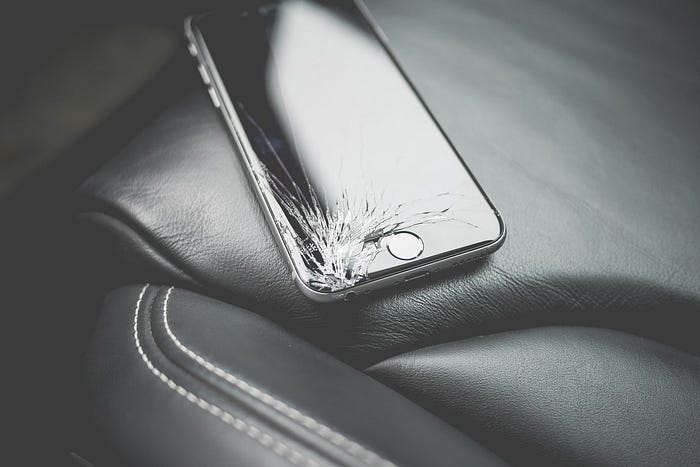Cell Phone Screen: How to Choose, How to Fix and How to Buy?
If your device accidentally fell to the floor and your cell phone screen broke. And now? Don't be frustrated! You were not the first and will not be the last to make this slip.
A survey conducted by Motorola revealed that almost half of Canadians (48%) have already broken or cracked their cell phone screen.
And you can rest assured.
After reading this article, you'll know exactly what to do to choose the right screen and how to proceed if your cell phone's display ever breaks.

How to Choose a Cell Phone Screen?
Maybe you haven't realized it, but there are several criteria for choosing cell phone repair services in Brampton. To help you make your decision, we have separated the main ones below.
Ever heard of pixels? They are small luminous squares that, together, form an image on the cell phone screen. The more pixels a display has, the better its resolution will be, as it is measured that way. The most common resolution in Canada is 1280 x 720 pixels (HD). However, the choice depends a lot on the user's perception and needs.
See what the options are:
- High Definition - HD (1280 x 720 pixels): the introduction of the HD display in cell phones made it possible for screens to increase in size without loss of definition. Nowadays, even lower-value devices have access to this resolution, which has become popular in recent years.
- Full High Definition - Full HD (1920 x 1080 pixels): originally used in televisions, it was introduced in smartphones, ensuring high definition to the displays of these devices.
- Quad High Definition - QHD (2560 x 1440 pixels): is the most common among the most expensive smartphones. Here, the image is extremely high definition, even on larger screens. But be aware that the battery life tends to be shorter.
- Ultra HD - 4K (3840 x 2160 pixels): this resolution is quite common on TV sets, but it still doesn't appear much on cell phones. As with QHD resolution, 4K consumes more battery.
- Retina: is a resolution created by the owner of the iPhone and exclusive to Apple devices.
If you are reading this article on your smartphone, know that this is only possible because the cell phone screen has some display technology, responsible for emitting light.
The main differences between them are resolution, energy-saving, color definition, viewing angle and speed in response time.
- LCD (Liquid Crystal Display): On the LCD display, transparent liquid crystals dim as electrical current passes through them to control the emission of light.
- This process happens because there is a layer of light that stays on permanently, the “backlight”. Therefore, the battery consumption is higher.
- In addition to this layer, there are two others, responsible for the colors that undergo similar procedures to the first layer.
- LED (Light Emitting Diode): Instead of the liquid crystals used in LCD technology, LED uses emitting diodes. It is a more economical and versatile alternative for a variety of purposes, from cell phone screens to light bulbs.
- OLED (Organic Light Emitting Diode): this technology also uses light-emitting diodes, but it is the evolved and optimized version of LED displays, in addition to being even more economical.
- AMOLED (Active Matrix of Organic Light Emitting Diode): just as the OLED is an evolution of the LED, the AMOLED is the improved OLED, following the maxim that “what is good can get even better”. The big difference here is in the image quality and responsiveness of this screen.
- Super AMOLED: if Apple has a unique screen resolution (retina), Samsung has its own technology. Super AMOLED has replaced the touchscreen, existing on LCD and AMOLED screens, with a very touch-sensitive layer inside the screen.
- IPS (In-Plane Switching): this technology originates from the LCD, but the way in which the liquid crystals are aligned is the main difference between these two types of screens. On the IPS, the crystals are aligned horizontally, while on the LCD, they are vertical. This can be easily seen in the viewing angle.
You must agree that the larger the mobile screen, the easier it is to view and handle. In recent years, cell phones have come out of the factory even larger. It is an industry response to a pattern of behavior of users, who perform various activities on it, such as listening to music, watching movies and series, paying bills and browsing.
The most popular screen size in the world is 5 inches. The iPhone SE and iPhone 6 Plus are on that average, with 4.7 and 5.5 inches, respectively. But your preference will determine your choice of the ideal display size. Would you be more reassured if you knew that no drop would damage your smartphone? That's a recent promise from the smartphone industry.
Motorola, a phone manufacturer, developed the Shattershield technology, which gives the handset screen the title "unbreakable". It is a technology applied to glass that resists falls and scratches and stands out for being thin and light. As it is versatile, it can replace common glass in different products, such as televisions and cars. It's worth taking a look at the video below to see how it works.
Most Common Screen Problems
With the evolution of technology, cell phones lost their buttons. Nowadays, you perform all functions by touching the screen. Precisely because it is so used, any flaws or problems in the display affect the user experience. It is not uncommon for the touchscreen to malfunction or even start to appear with black smudges and streaks on the display. Not to mention the daily handling. Anything can happen: cracking, scratching and even breaking.
By this, all caution is little. Use film and cover (preferably anti-impact) to better protect your device. But if an accident happens, then you need good technical assistance.
Post Your Ad Here

Comments